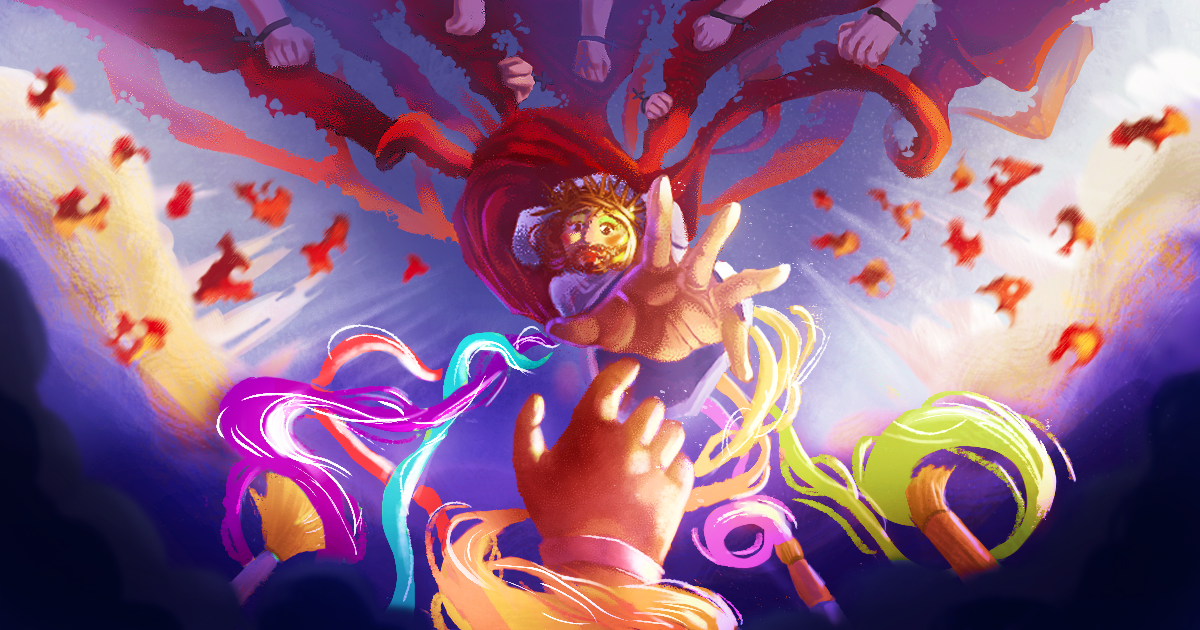
Invoking the Holy Trinity has always marked a new beginning for me.
Despite not attending any sectarian institution prior to college, most of my teachers had always emphasized the importance of prayers as they said it would foster a “closer connection” with God. May it be a simple request for guidance from our guardian angels to a solemn, albeit occasional, recitation of the rosary, we always began our classes with God in mind. Sometimes, entire class periods would be allocated to prayer or even masses. These were merely some of the clear reminders of the great importance our alma mater and society had placed on ensuring that we remained faithful and God-fearing.
On the surface, I saw students take the holy lessons they had learned to heart, fully embracing the comfort and solace that God had been giving and would be giving them, and willfully shared that feeling to other people. For some, however, their cloaks of holiness hid devious desires; desires which craved to put down anything that deviated from the supposed “words of God”, even if it meant influencing public opinion to fully suppress any “blasphemy” against their Lord and Savior.
If we truly believe that God can be seen anywhere, in anyone, and in anything, then we may perhaps attempt to understand that God manifests Himself, not only in the manners of yore, but also through the acts of His children in the contemporary era. People change, and so does how we practice our faith.
No universal definition
My alma mater may have been one of the only non-Catholic schools that mandated Religion as a subject to be taught to us elementary kids. We learned different prayers, sacraments, essential values, and code of conduct every well-mannered child of God should know. In preparation for our class’ first communion, they even invited various speakers to talk more about the faith’s traditions. To strictly follow the Catholic canons was allegedly the only way to prevent being unbecoming for His embrace. Looking back now, these lectures only made one thing certain: there was only one way to act and pray in the presence of God—anything else was improper.
Yet years later, I discovered these constraints were not as solid as they made it seem. As a Humanities and Social Sciences (HUMSS) graduate, one of our specialized subjects included “Introduction to World Religions and Belief Systems” which had more of an academic approach to the study of religion and faith. The first thing that we learned was that there was no single agreed upon definition of religion since not all definitions can characterize every belief system. Limiting religion to a few lines in our dictionaries may be seen as delegitimizing beliefs which fall beyond those notions. Although this may just be limited to when we compare and contrast different religions and denominations, it can also extend to the practice of the devout. For some, strengthening their connections to the heavens constitutes more than the usual prayers.
Renowned for his distinctive red and white Renaissance-esque artworks, Spanish artist Salustiano Garcia Cruz drew the ire from some for his supposedly “effeminate” and “homoerotic” Easter poster of Jesus Christ early in February this year. His creation presented the Son of God as a fresh-faced young man wearing a white loincloth and a headpiece, his distinct wounds and crown of thorns noticeably absent.
While a respectful portrayal of a sacred figurehead should be ensured, decrying Cruz’ work as blasphemous speaks volumes about how a system demands its adherents to abide by what is traditional–to remain averse to supposedly unsightly practices–whilst it may be more just to do otherwise.
There is no single definite rulebook of how to practice one’s faith, for one seeks to demonstrate his love for God in a manner that is true to themself. It seems evident that we may be able to remain faithful through the acts of a contemporary disciple as millennia-old teachings may no longer be as restricting. Hence, Cruz’ act was not in any way defacing the Lord but more of an act of celebration. God does not only represent one type of person, rather everyone. They exhibited their faith in a manner that best showcased how God is a manifestation of mankind itself.
Faith is personal
Most of us think that the rules governing faith are set in stone, rules seemingly to remain unchanged now and forevermore. In reality, the practice of faith is not set in stone but is liquid, constantly adapting from person to person. How one family practices Catholicism may vary greatly from another of the same sect at various points of time.
Taking a look at the devotees of Quiapo’s annual Feast of the Black Nazarene shows us how not only faith in the abstract can transcend to the heavens above. Those who attend the pilgrimage occasionally attract accusations of idolatry from those within and outside religious convents. Some detest how the pilgrims would wipe, touch, and kiss the hallowed sculpture, emphasizing that they should worship God instead of a mere statue. However, their worship for the Nazarene is just one way of expressing their faith. The sacred depiction is merely a bridge to be crossed on their journey to God’s kingdom.
They don’t revere the effigy itself, but what it represents. The very essence of the physical’s existence is the reason for its worship. As such, we should not label another’s religious practices as incorrect or even “blasphemous” because each person demonstrates their belief in God in different ways, despite some being more unconventional than others.
This concept, however, should not be misunderstood. There is a fine line between showing your love for God and marginalizing those who believe or don’t believe in Him. We should critically assess these practices before we jump to conclusions. We need to ask ourselves: are his practices harmless acts of his love for God, or does it cause disgrace to my religion itself?
People change and so does faith
We, as a society, have made tremendous progress toward inclusion and acceptance since the advent of Christ. We gradually continue to recognize the inherent value of every human being regardless of their identity. Laws have been passed and amended, churches have now made use of technology to spread God’s word anywhere, and teachers have become less stern on what constitutes a “God-worthy” prayer, all in accordance with the needs of the people in the present.
Surprisingly, even the Vatican has taken steps in support of this progress. Pope Francis has recently permitted Catholic priests to bless same-sex couples, opening their embrace to those who have felt disdain from the faith. Although dissimilar to same-sex marriage, the institution of these informal blessings signified a budding hope that Catholicism would one day open its gates to true inclusion.
During my time in grade school, I thought the only way you would be able to respect God is to stick with what was customary. My fourth grade adviser made us go to mass every Sunday during the school year so that we could practice our faith. We even had to make the priest sign the back of our notebooks to prove that we actually attended. I thought that the only valid prayers were the ones written in holy scriptures and in the tiny booklets and pamphlets my mother bought from the stalls near church. But now, we have slowly allowed ourselves to become more flexible in terms of how we show our devotion to Him—a far cry from the practices of just a mere decade ago.
Though my days of traditional prayer and worship have long since passed, I now tend to find God in life’s simplicities; in my moments of solitude, in the embrace of my loved ones, and in every good thing that has ever happened to me and others. I believe that His grace is the only constant in each of our lives, a constant that does not require the rituals we grew accustomed to.
Likewise, Pura Luka Vega’s case, albeit radical for most, is a shining example of how one’s faith is not restricted to going to Sunday masses, reciting the same olden prayers, and regular Bible readings, but it can also be through even the most creative showcases of our love for God.
***
Maybe it’s time to expand our once confined practice of religion and faith. We may perhaps not restrict, condemn, and vilify those who harmlessly go beyond the norms of our beliefs. Religion may no longer be caged with millennia-old shackles; it should be free to take whatever shape it needs to.
In the 21st century, God can be found from churches and classrooms to the drag stage and social media. God has long been with us in our journey to find solace in Him. He is in all of us and it is up to us to recognize that.

